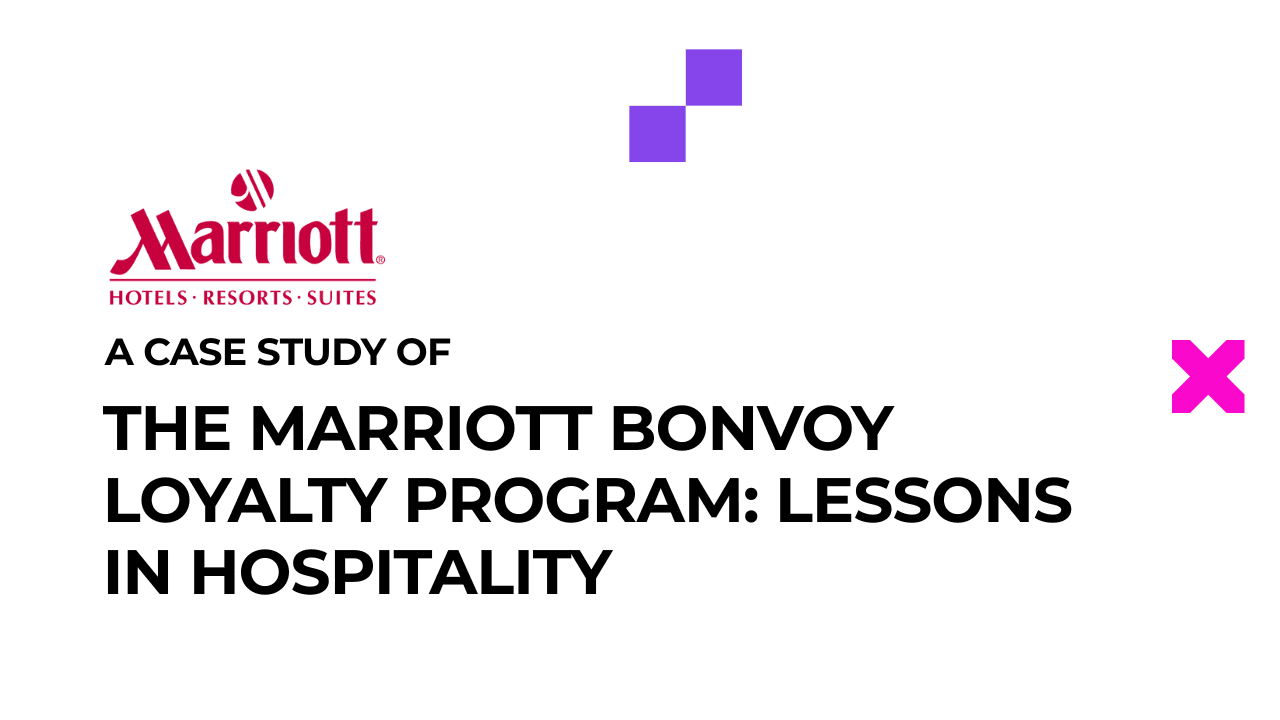A Case Study of the Marriott Bonvoy Loyalty Program: Lessons in Hospitality (2025)

Introduction
The Subject: The Marriott Bonvoy loyalty program is a dominant force in the hospitality industry and a premier case study in achieving market leadership through scale and a powerful tiered loyalty programs. For any business owner, analyzing this program offers a masterclass in driving direct bookings and building a global community of loyal customers.
The Core Strategy: At its heart, the Marriott Bonvoy loyalty program is built on an "a stay for every occasion" philosophy. It leverages a massive portfolio of over 30 brands and a highly structured elite status system to maximize hotel customer retention and capture a customer's entire travel spend.
Why it Matters to You: By deconstructing the Bonvoy model, you can learn powerful principles for creating a "value ladder" that encourages customers to deepen their engagement with your brand, no matter what industry you are in.
Deconstructing the Marriott Bonvoy Engine
The core of the Marriott Bonvoy loyalty program is its vast, unified ecosystem. A customer can earn points and status credits seamlessly, whether they are at a budget-friendly Courtyard for a business trip or a luxury St. Regis for an anniversary. This creates incredible "stickiness" and makes leaving the ecosystem feel like a loss.
Lesson 1: The "Something for Everyone" Portfolio Strategy
Marriott's Strategy: Marriott Bonvoy's greatest strength is its portfolio. It caters to virtually every travel need and budget under one loyalty umbrella. This allows Marriott to capture revenue from a customer throughout their entire life journey—from post-graduation road trips to luxury family vacations. This strategy of product tiering is key to their market dominance.
How You Can Apply This:
- Tier Your Own Offerings: Even as a smaller brand, you can apply this principle. Create a "good, better, best" range for your products or services. A D2C coffee brand, for example, could offer a classic "House Blend," a mid-tier "Single Origin" selection, and a premium, limited-edition "Geisha Reserve."
- Create an Upgrade Path: Ensure your marketing clearly communicates the benefits of moving up the product ladder, allowing you to capture a wider range of customers and have higher customer lifetime value.
Lesson 2: Making Mid-Tier Status the "Golden Ticket"
Marriott's Strategy: A critical element of the Marriott Bonvoy loyalty program is the immense value jump at the Platinum Elite status (50 nights). The benefits gained—guaranteed 4 PM late checkout, lounge access with free breakfast and evening hors d'oeuvres—are game-changing for a frequent traveler. This makes achieving Platinum a powerful, tangible goal that drives significant repeat business.
How You Can Apply This:
- Identify Your "Sweet Spot" Tier: Don't make your loyalty program a slow, linear progression. Create a "jump" in value at your most important VIP tier to make it a highly desirable goal.
- Offer Game-Changing Perks: When a customer reaches your "Gold" tier, the rewards should feel like a major upgrade. This could be moving from standard shipping to permanent free express shipping, or from email support to a dedicated customer service contact. The goal is to make them feel they've truly "unlocked" something valuable.
Lesson 3: The Co-Branded Credit Card as a Loyalty "Fast Track"
Marriott's Strategy: The Marriott Bonvoy loyalty program uses co-branded credit cards (like the one with HDFC Bank in India) as a powerful acquisition and retention tool. These cards act as a "fast track" to loyalty, often providing automatic Silver or Gold elite status, a large block of bonus points, and free night awards annually. This gets new members invested in the ecosystem instantly.
How You Can Apply This:
- Create Your Own "Fast Track": While you can't offer a credit card, you can create a fast track to your VIP status through other strategic actions.
- Reward High-Value Actions: For example, offer instant VIP status to any customer who successfully refers three new paying customers. Or, run a promotion where spending a certain amount within a single month grants them VIP status for a full year. This encourages high-value behavior beyond just slow-and-steady purchasing.
Why This Strategy Works (A Business Analysis)
Pros for Your Business: A strong tiered loyalty program encourages customers to consolidate their spending with you. Offering a highly desirable mid-tier creates a clear goal and motivation. Strategic partnerships can significantly accelerate customer acquisition management.
Cons for Your Business: The high-value perks required to make a top tier feel special can be costly. This strategy requires a certain scale to be effective, as a "something for everyone" portfolio is difficult for small brands to create.
Key Takeaways from the Marriott Bonvoy Loyalty Program
Final Verdict: The Marriott Bonvoy loyalty program is a masterclass in using scale and a well-structured value ladder to dominate a market. It teaches that the key to retention isn't just rewarding loyalty, but creating a clear and compelling journey for customers to become more loyal.
Strategic Competitor: Contrast this with a program like Airbnb (which has minimal traditional loyalty) or boutique hotel programs that focus on personalized, on-property experiences rather than a standardized, points-based system.
Your First Step: Analyze your own customer data to identify the natural spending break points. Use this to design a simple, two-tiered VIP program. Define a "game-changing" perk that you can offer to your top tier to make achieving that status a primary goal for your customers. While standard apps are a great starting point, implementing a truly sophisticated retention strategy can be complex. For businesses ready to accelerate their growth, exploring a partnership with a dedicated loyalty solutions provider is often the most effective next step.